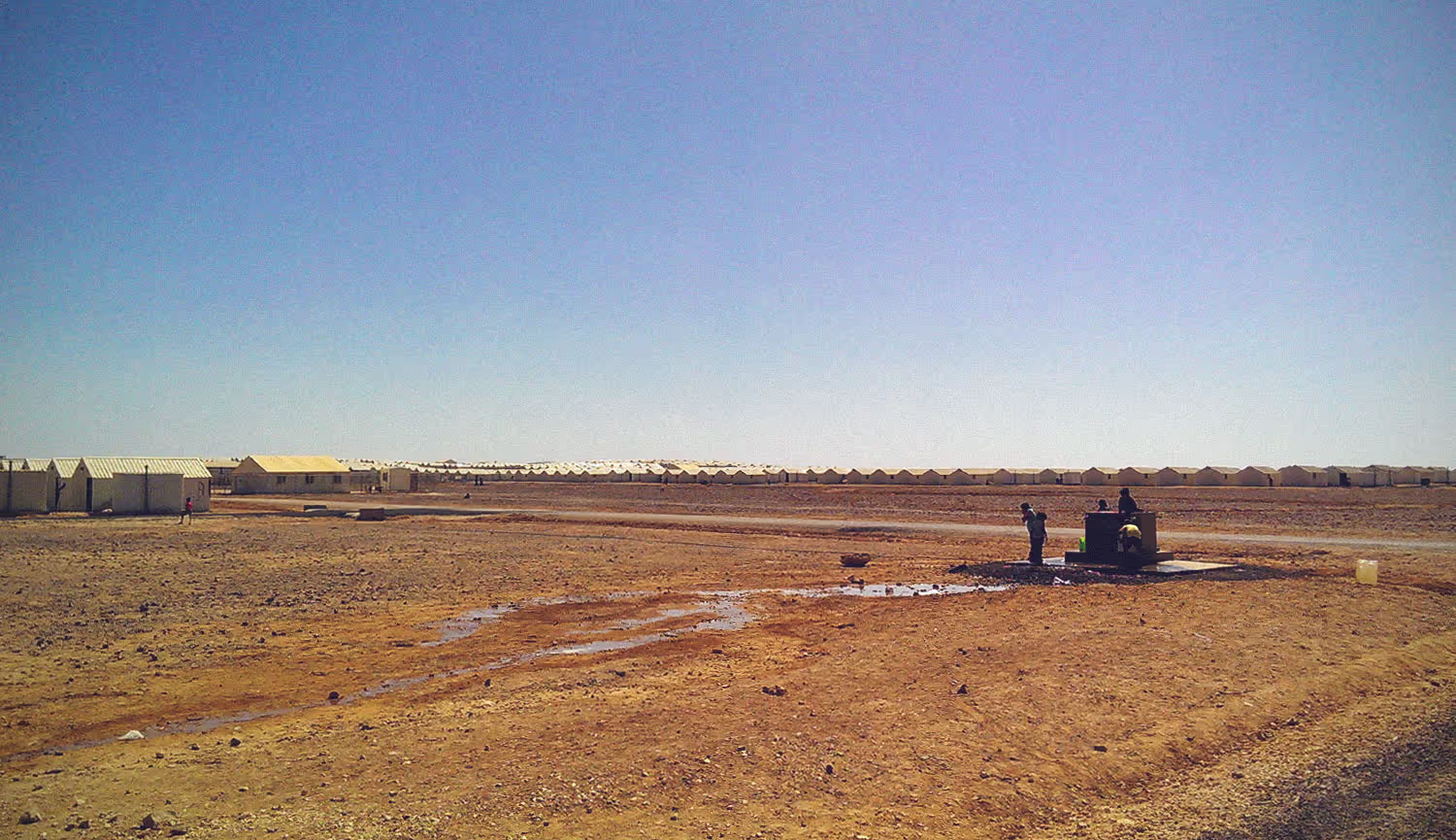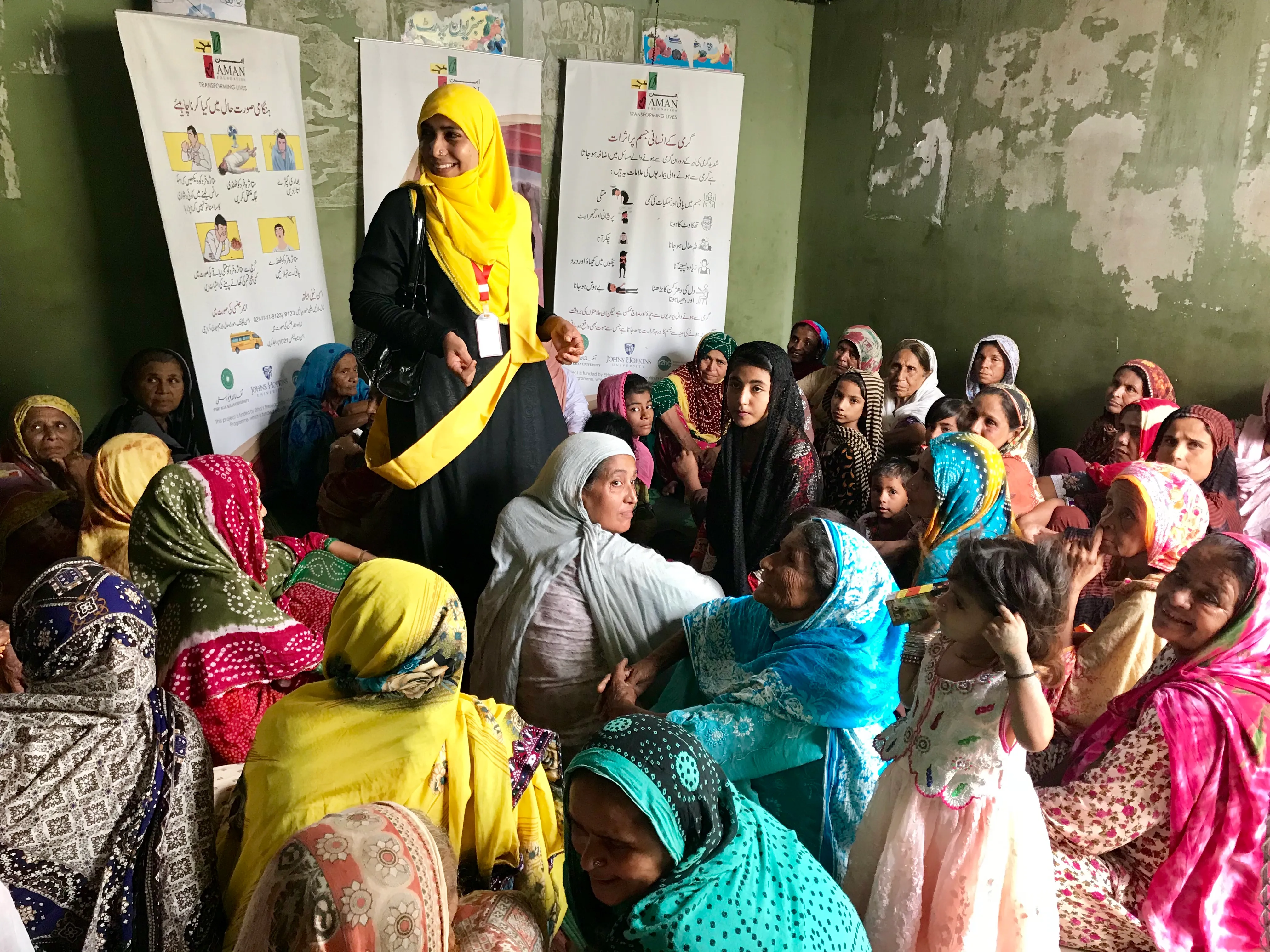Temperature and Seasonal Effects on Chlorine Decay: Findings from Jordan

One of the gaps we face with current emergency water treatment guidelines is that they are framed as universal treatment rules and do not account for local temperature or seasonal specificities. MSF and Berkley are taking action to change this.
As we expanded the study to other refugee camps around the world, we wanted to also understand how local climate affects chlorine decay so that the new guidelines we develop are appropriate for specific climatic settings.
To do this, we carried out research at a single site—the Azraq refugee camp in Jordan—over the course of two seasons: summer 2014 and winter/spring 2015. Fixing the site allowed us to control for site-related influences on chlorine decay, such as ambient hygiene, and focus in on temperature-driven effects only.
At Azraq, we found that an 11°C difference in average mid-afternoon air temperature between summer and winter/spring seasons, resulted in a nearly fourfold increase in the decay rate. This is greater than the two-fold increase associated with a 10°C differential documented in previous distribution system studies, suggesting that temperature may have a greater effect driving chlorine decay after water leaves the distribution system than within it. These findings confirm that emergency water treatment guidelines must be articulated for specific climatic settings, and must also be subject to seasonal adjustments at a given site.
By modeling chlorine decay using field data from Azraq, we generated recommendations for what delivery FRC (free residual chlorine) should be at camp water distribution points in order to provide an adequate level of protection at the point of consumption (i.e., 0.2 mg/L FRC at 24 hours post-distribution). We found that when temperatures rise by 10°C between seasons—even when environmental conditions remain the same—delivery FRC at tapstands should be increased by up to 0.5 mg/L to ensure sufficient residual at the point of consumption.

Overall, we recommend that in refugee/IDP camps like Azraq with good environmental hygiene, delivery FRC at tapstands should be in the range of 0.8 to 1.0 mg/L during hot summer months (average mid-afternoon temperatures in the range of 30°C to 40°C). Conversely, the current guideline range of 0.2 to 0.5 mg/L may work to provide adequate protection in clean settings such as Azraq during winter/spring months (average mid-afternoon temperatures in the range of 20°C to 25°C).
As the problem of recontamination during household storage and use is also common in intermittent urban and rural water systems in development contexts, these findings from camps in South Sudan and Jordan may also offer guidance on how to better protect stored water supplies in nonemergency resource-constrained settings as well.
Interestingly, at Azraq we also found that sunlight exposure (i.e., UV-mediated degradation) is a strong driver of chlorine decay, possibly even dominating temperature-driven decay. We found that when water is stored in direct sunlight in closed translucent containers (i.e., clear, rigid or collapsible, 10L or 20L jerrycans) it was not possible to maintain any chlorine residual at 24 hours post-distribution. This underscores the need to tightly control FRC at tapstands in order to prevent excessive chlorination events that may lead beneficiaries to adopt this practice, as well as health promotion efforts to mitigate it if it does emerge. Other container types such as opaque, coloured jerrycans and lidded buckets may restrict UV penetration and limit chlorine decay, however further field research is necessary to clarify the role of container type on UV-mediated FRC decay.
Our next post will present an integration of field findings from South Sudan, Jordan, and the final site at the Kigeme refugee camp in Rwanda and will include the final evidence-based guidelines for centralized chlorination.
Stay updated
Sign up for our newsletter to receive regular updates on resources, news, and insights like this. Don’t miss out on important information that can help you stay informed and engaged.
Related articles



Explore Elrha
Learn more about our mission, the organisations we support, and the resources we provide to drive research and innovation in humanitarian response.